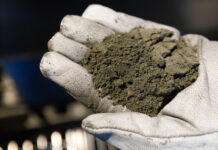
CANADIAN gold miner said it had discovered gold about three kilometres from its Otjikoto mine in Namibia that it could dig in 2026.
An estimated 390,000 ounces of the metal, in the inferred mineral resource category, was discovered in the Springbok zone of its Antelope deposit, south of Otjikoto.
A preliminary economic assessment would begin on the prospect in under two years, the company said in an announcement today.
An inferred mineral resource of some 1.75 million tons grading at 6.91 grams per ton was discovered at Springbok. There is also potential for resource expansion as promising results were reported at Oryx, the nothernmost part of Antelope.
Primary mining at Antelope would supplement processing of low-grade stockpiles at Otjikoto up to 2031, said B2Gold. The goal would be to increase gold production levels to over 100,000 oz per year from 2026 through to 2031, it said.
The Toronto-listed firm has set aside $9m for exploration at Otjikoto this year compared to exploration spend of $3.3m last year.
Current gold production estimates at Otjikoto are expected to be between 180,000 to 200,000 oz in 2024 and 2025. Production would decrease to just under 100,000 oz in 2026 before stepping down to less than 50,000 oz/year between 2026 and 2031 during the processing of low-grade stockpiles.
B2Gold said in January that open pit mining operations at Otjikoto were scheduled to ramp down throughout 2024 and conclude in 2025. Underground mining operations at the mine’s Wolfshag reserve are expected to continue through 2026,” it added.
“Processing operations will continue through 2031, when economically viable stockpiles are forecast to be exhausted,” it said.










